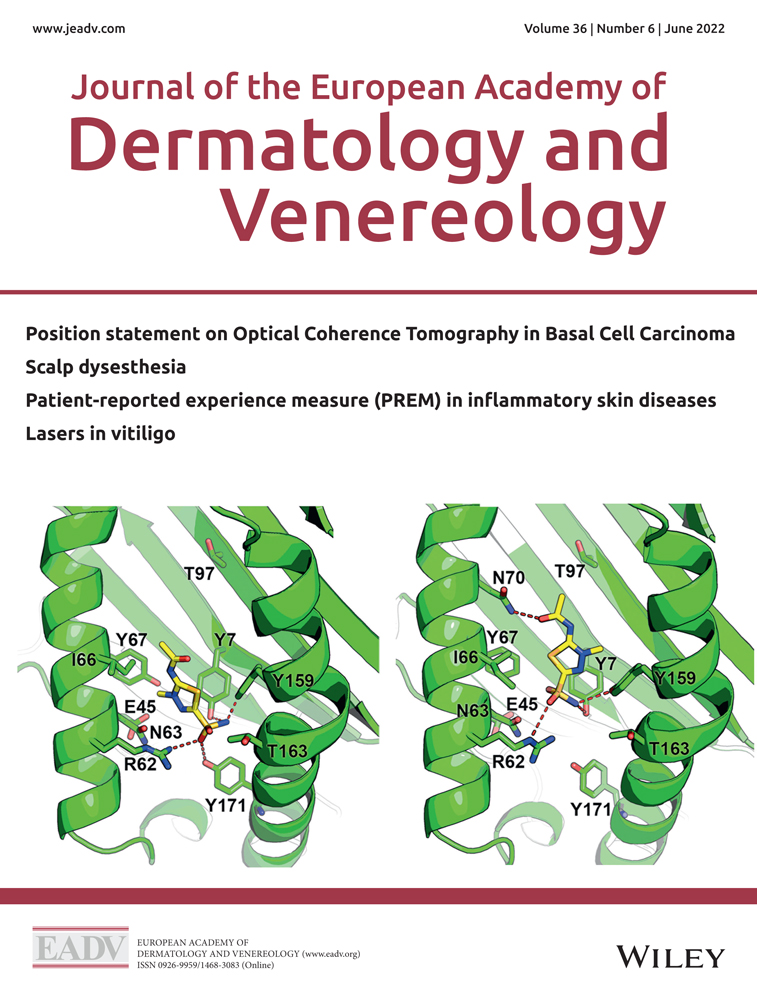TRASS: a global approach to assess the severity of truncal acne
Conflicts of interest
The authors received honoraria from Galderma International, France for participating in the expert group.
Funding sources
This work has been funded by Galderma International, France.
Abstract
Introduction
Only a small amount of published data regarding truncal acne is available, and no proper tool to assess its severity exists.
Aim
The aim of the study was to provide dermatologists with an easy-to-use tool to assess truncal acne (TRASS, truncal acne severity scale) using a global approach.
Methods
A scoring tool that assesses the severity of acne (based on GEA and ECLA scales) on the trunk using a global approach was built, including three sub-scores: family history, clinical signs and quality of life (QoL). In order to test TRASS, the experts used photographs of 47 patients attending their clinics with truncal acne. The regression optimized (ROP) model was applied to assess the diagnosis performance of TRASS and to identify items contributing to the classification of the patients. Internal testing was made to demonstrate the robustness of the model. Correlation analyses between the different items were performed to evaluate the interaction between the different items and their impact on the severity grading of truncal acne.
Results
Patients with the most severe acne were identified by TRASS. The error level was 6.6% after internal validation and 10.4% when using the median value or the centile 75th (6.6% and 10.4%). Correlation was significant between systemic treatment and scars (P = 0.0025) and nodules (P = 0.01988) and between location and QoL (P = 0.0095).
Conclusion
Truncal acne severity scale is the first global, patient-centred approach to evaluate truncal acne by scoring the importance of each factor independently from its clinical severity. TRASS may allow the practitioner to choose and validate the most suitable therapy together with the patient in order to treat his or her truncal acne successfully and to limit treatment failure.
Open Research
Data availability statement
The data that support the findings of this study are available from the corresponding author upon reasonable request.




